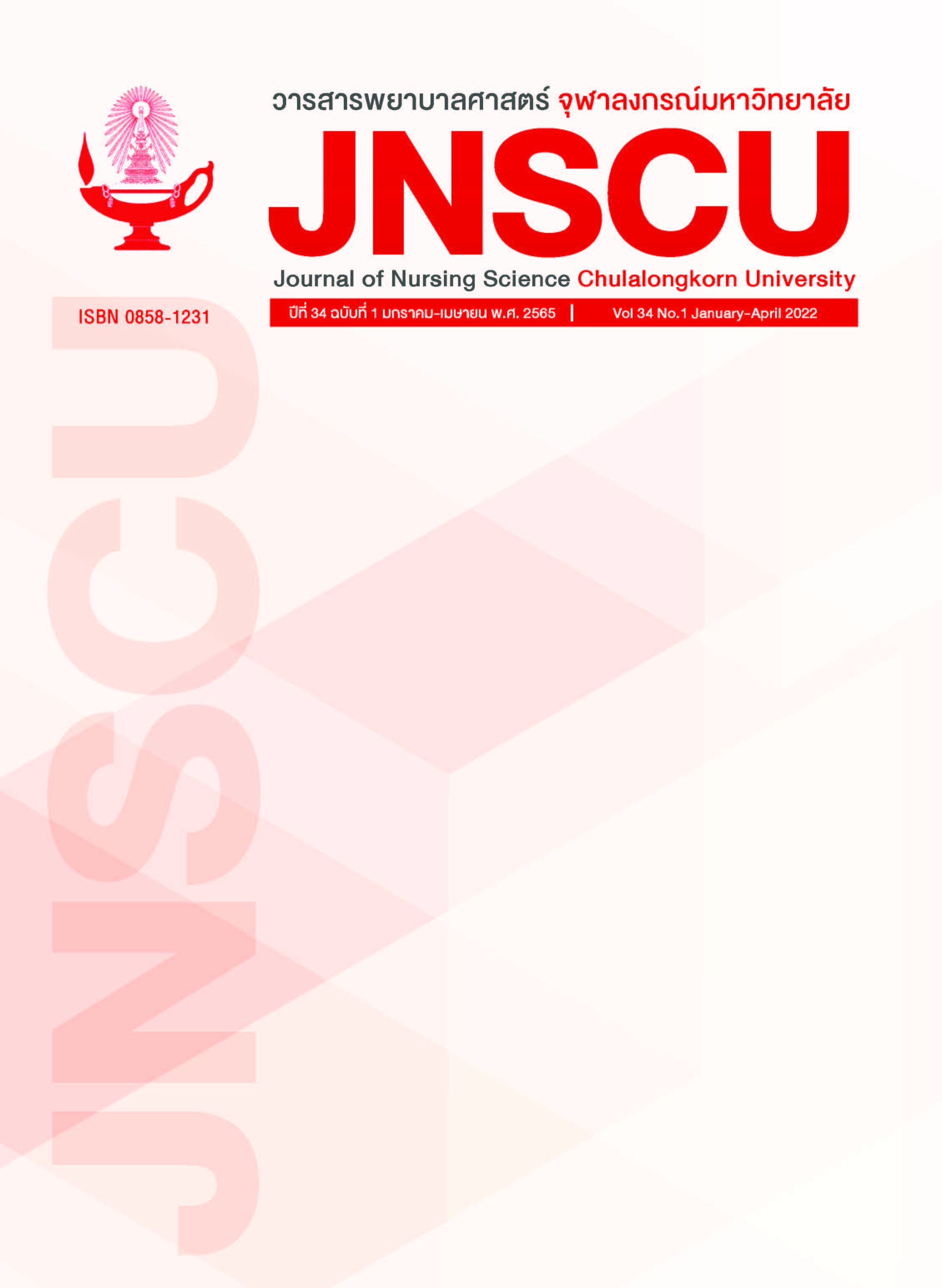ปัจจัยคัดสรรที่สัมพันธ์กับภาวะซึมเศร้าของผู้ต้องขัง ติดเมทแอมเฟตามีน
คำสำคัญ:
ภาวะซึมเศร้า, ผู้ต้องขัง, การติดเมทแอมเฟตามีนบทคัดย่อ
วัตถุประสงค์: เพื่อศึกษาภาวะซึมเศร้าของผู้ต้องขังติดเมทแอมเฟตามีน และความสัมพันธ์ระหว่างปัจจัยคัดสรรกับภาวะซึมเศร้าของผู้ต้องขังติดเมทแอมเฟตามีน
รูปแบบการวิจัย: การวิจัยแบบพรรณนาเชิงหาความสัมพันธ์
วิธีดำเนินการวิจัย: กลุ่มตัวอย่าง คือ ผู้ต้องขังติดเมทแอมเฟตามีน อายุ 18-59 ปี ในเรือนจำ/ทัณฑสถานเขตภาคเหนือตอนบน โดยวิธีการสุ่มตัวอย่างแบบชั้นภูมิ ได้กลุ่มตัวอย่างจำนวน 165 ราย เครื่องมือที่ใช้ในการวิจัย คือ 1) แบบคัดกรองและส่งต่อผู้ป่วยที่ใช้ยาและสารเสพติดเพื่อรับการบำบัดรักษา กระทรวงสาธารณสุข (บคก.กสธ.) V.2 2) แบบประเมินอาการทางจิต 3) แบบสอบถามข้อมูลส่วนบุคคลของผู้ต้องขังติดเมทแอมเฟตามีน 4) แบบสอบถามวัดการเผชิญความเครียด 5) แบบสอบถามวัดการเห็นคุณค่าในตนเอง 6) แบบสอบถามวัดการตีตราตนเอง 7) แบบสอบถามวัดการสนับสนุนทางสังคม และ 8) แบบประเมินภาวะซึมเศร้า เครื่องมือชุดที่ 2 และ 4-8 มีค่าความเที่ยง สัมประสิทธิ์อัลฟาของครอนบาค เท่ากับ .82, .87, .86, .82, .83 และ .91 ตามลำดับ วิเคราะห์ข้อมูลด้วยสถิติเชิงบรรยาย และทดสอบความสัมพันธ์ด้วยสถิติไคสแควร์ สหสัมพันธ์พอยท์ไบซีเรียล และสหสัมพันธ์เพียร์สัน
ผลการวิจัย: 1) ผู้ต้องขังติดเมทแอมเฟตามีนส่วนใหญ่ คิดเป็นร้อยละ 33.9 มีภาวะซึมเศร้าในระดับ ปานกลาง 2) การเผชิญความเครียด แบบมุ่งจัดการกับปัญหาโดยใช้ความสามารถของตนเอง แบบมุ่งจัดการกับปัญหาโดยอาศัยแหล่งสนับสนุนอื่น ๆ และแบบหลีกเลี่ยงปัญหา มีความสัมพันธ์กับภาวะซึมเศร้าของผู้ต้องขังติดเมทแอมเฟตามีน (c2= 94.23; p<.05) 3) ระยะเวลาการต้องโทษ และการตีตราตนเอง มีความสัมพันธ์ทางบวกกับภาวะซึมเศร้าของผู้ต้องขังติดเมทแอมเฟตามีน (r = .446 และ .340; p<.05) 4) อายุ การเห็นคุณค่าในตนเอง และการสนับสนุนทางสังคม มีความสัมพันธ์ทางลบกับภาวะซึมเศร้าของผู้ต้องขังติดเมทแอมเฟตามีน (r = -.292, -.404 และ -.396; p<.05)
สรุป: การพยาบาลที่เหมาะสมกับผู้ต้องขังติดเมทแอมเฟตามีนควรมีการคัดกรองโดยใช้แบบประเมิน
และติดตามอย่างต่อเนื่อง เพื่อให้การดูแลที่เหมาะสมโดยคำนึงถึงปัจจัยต่าง ๆ ที่พบว่าสัมพันธ์กับอาการนี้
เอกสารอ้างอิง
Office of the Narcotics Control Board,
Ministry of Justice. Situation of narcotics
years 2018 and trend years 2019
[Internet]. 2019 [cited 22 march 2562].
Available from: https://www.
chiangmaihealth.go.th/cmpho_web/
document/18083115356 82480 23 .pdf
Strategy and Plan Division, Department of
Corrections. Corrections statistics report
[Internet]. 2020 [cited 1 July 2563].
Available from: http://www.correct.
go.th/rt103pdf/report_index.php
Medical Services Division. Psychiatric and
neuropathy statistics report of poisoners.
Nonthaburi: Department of Corrections;
World Health Organization. World health
report 2002: Reducing risks, promoting
healthy life. Geneva: World Health
Organization; 2002.
Beck AT, Rush AJ, Shaw BF, Emery G.
Cognitive therapy of depression. New
York: The Guilford Press; 1979.
Rao G, Rosliza AM, Halimatus SM. A review
on determinants of Depression among
adult prisoner. Malays J Med Health
Sci 2018; 14(2): 75-87.
Uthis P, Suktrakul S, Sonlar K, Sawangpon M.
Factors related to depressive symptoms
among adolescent amphetamine users.
J HEALTH Sci 2018; 27(6): 965-77.
(in Thai)
Thorndike RM. Correlation procedures for
research. USA: A Halsted Press Book;
Group WAW. The alcohol, smoking and
substance involvement screening test
(ASSIST): development, reliability
and feasibility. Addiction 2002; 97(9):
-94.
Assanangkornchai S, Balthip Q, Edwards JG.
Implementing the Alcohol, Smoking,
Substance Involvement Screening Test
and linked brief intervention service in
primary care in Thailand. Journal of
Public Health 2014; 36(3): 443-9.
(in Thai)
Overall JE, Gorham DR. The brief psychiatric
rating scale. Psychol Rep 1962; 10(3):
-812.
Kittirattanapaiboon P, Kongsuk T, Pengjuntr
W, Leejongermpoon J, Chutha W,
Kenbubpha K. Epidemiology of
psychiatric comorbidity in Thailand: a
national study 2008. J Ment Health Thai
; 21(1): 1-14. (in Thai)
Lazarus RS, Folkman S. Stress, appraisal, and
coping. New York: Springer; 1984.
Sumnuan S, Uthis P. Relationships between
personal factors, stress appraisal,
coping, self-esteem, and psychological
well-being of amphetamine addicted
adolescents receiving treatment in out
patient department, Thanyarak Institute.
[Master’s thesis, Nursing program].
Bangkok: Chulalongkorn University;
Rosenberg M. Society and the adolescent
self-image. In Society and the adolescent
self-image. New Jersey: Princeton
University press; 1965.
Srimoragot P. Effect of supportive counseling
on perceived illness, self-esteem, and
morale in cervical cancer patients
undergoing radiotherapy. [Unpublished
dissertation]. Bangkok: Mahidol
University; 1993.
Penpaktr U, et al. Full Research Reports on
“Evaluation of the end of TB and AIDS
project with a service kit Reach-Recruit-
Test-Treat-Retain: RRTTR among
drugusers by injection method”.
Bangkok: Chulalongkorn University.
(in Thai)
Fife BL, Wright ER. The dimensionality of
stigma: a comparison of its impact on
the self of persons with HIV/AIDS and
cancer. J Health Soc Behav 2000; 41(1):
-67.
Brandt PA, Weinert C. The PRQ-A social
support measure. Nurs Res 1981; 30(5);
-80.
Tangchurat S, Tawichachat N, Worakul P,
Wanichanont P.A comparative study of
burdens and stress between relative
and non-relative caregiver of alzheimer's
disease patients [Master’s thesis, Nursing
program]. Bangkok: Chulalongkorn
University; 2001.
Beck AT, Steer RA, Brown GK. Manual for the
Beck Depression Inventory-II. San
Antonio: Psychological Corporation;
Sriyong M. Beck’s depression assessment
(Beck Depression Inventory IA [BDI-IA]).
Bangkok: Faculty of Education,
Ramkhamhaeng University; 1979.
ดาวน์โหลด
เผยแพร่แล้ว
ฉบับ
ประเภทบทความ
สัญญาอนุญาต

อนุญาตภายใต้เงื่อนไข Creative Commons Attribution-NonCommercial-NoDerivatives 4.0 International License.
ลิขสิทธิ์ของบทความที่ตีพิมพ์เป็นของวารสารพยาบาลศาสตร์ จุฬาลงกรณ์มหาวิทยาลัย ทั้งฉบับตีพิมพ์เป็นรูปเล่มและเอกสารออนไลน์



